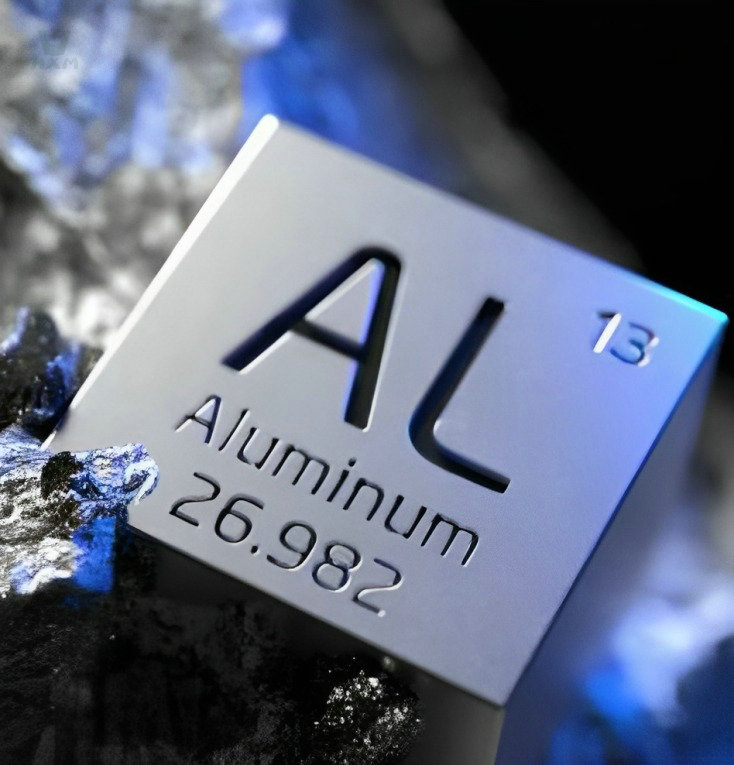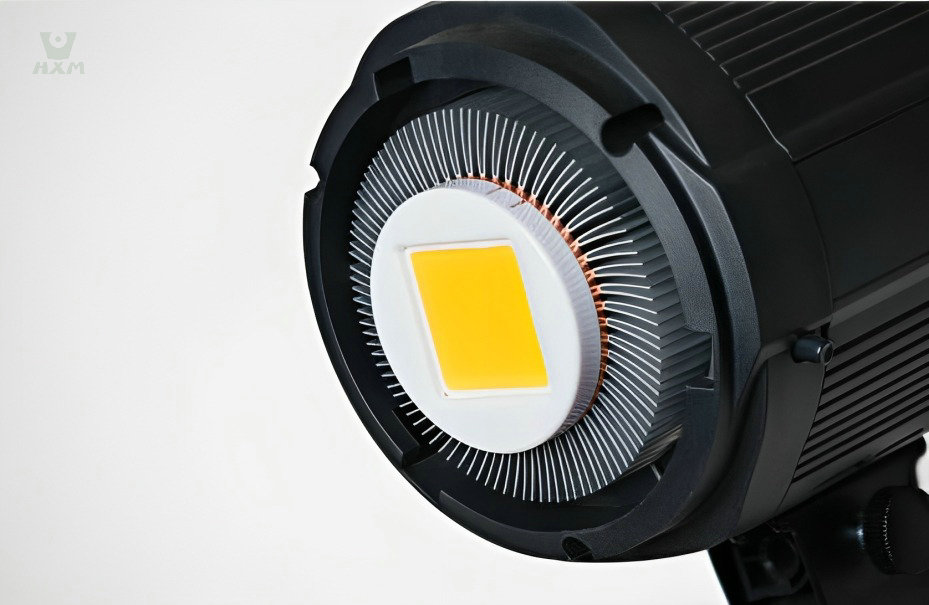Can aluminum conduct electricity as effectively as copper or other traditional conductors? Electricity is the lifeblood of our technological age and the materials that enable its flow play a critical role. While we often associate copper with conductivity, let’s embark on a fascinating exploration to answer the burning question: Is aluminum a conductor capable of meeting our electrical needs? Delve into the world of conductivity as we uncover the secrets of aluminum and its role in powering our modern world.
Is aluminum a conductor?
Indeed, it is. In the realm of electrical conductivity, aluminum is often considered a reliable performer, even though it doesn’t quite match the conductivity of copper, the reigning champion.
Aluminum’s electrical conductivity is approximately 61% that of copper, which means it can efficiently transmit electrical current while being considerably lighter. It’s particularly favored in power transmission lines, where weight is a crucial factor. Additionally, aluminum has a lower cost compared to copper, making it an economically viable alternative for many applications.
what is Electrical Conductivity?
Electrical conductivity is a fundamental property of materials, defining their ability to transmit electrical current. It is a measure of how well a material allows electric charges, typically in the form of electrons, to flow through it. This property is crucial in various electrical and electronic applications and is determined by the presence of free electrons within the material.
Materials with high electrical conductivity have a large number of free electrons that can easily move in response to an applied electric field. These materials, often referred to as conductors, offer minimal resistance to the flow of electrical current. Copper, silver, and gold are excellent examples of high-conductivity materials.
In contrast, insulators are materials with low electrical conductivity, as they have very few free electrons, and thus, they do not readily allow electric current to pass through. Materials like rubber, glass, and wood are typical insulators.
Semiconductors, such as silicon, have intermediate conductivity. They can be controlled to conduct or insulate by introducing impurities or by applying an external voltage.
The importance of electrical conductivity lies in its critical role in electrical circuits, where it ensures the efficient flow of electricity with minimal loss of energy in the form of heat. Understanding a material’s electrical conductivity is essential for designing electrical systems and choosing the right materials for specific applications, particularly in fields like power distribution, electronics, and telecommunications. In the case of aluminum, understanding its electrical conductivity helps determine its suitability for various electrical and electronic applications.
Comparison aluminium with other conductive materials
When assessing the electrical conductivity of aluminum, it’s essential to compare it to other common conductive materials. This comparison helps determine its suitability for various applications and provides insights into its advantages and limitations.
Copper is one of the most widely used conductive materials due to its exceptional electrical conductivity. It has nearly twice the electrical conductivity of aluminum. This high conductivity makes it the preferred choice for applications where minimal energy loss and high efficiency are critical, such as power transmission and high-frequency electrical circuits.
Silver is the most conductive element known, surpassing both copper and aluminum. It has the highest electrical conductivity of all materials and is often used in specialized applications that require the utmost conductivity, like high-frequency RF (radio frequency) circuits. However, silver’s high cost and susceptibility to tarnish limit its widespread use.
Gold offers excellent electrical conductivity and is highly resistant to corrosion and tarnish. It is used in applications where a reliable, corrosion-resistant connection is essential, such as connectors and switches in electronic devices.
Aluminum has good electrical conductivity but is not as conductive as copper or silver. It has around 61% of the electrical conductivity of copper. Despite this lower conductivity, aluminum is still widely used in many electrical applications, particularly in power transmission lines, overhead power cables, and electrical busbars. Its lightweight nature and cost-effectiveness make it a practical choice for long-distance power distribution.
In summary, while aluminum’s electrical conductivity is lower than some other materials like copper and silver, it is still a practical choice for various applications, especially those requiring lightweight, cost-effective solutions. The choice between these materials depends on specific application requirements, cost considerations, and the need for high or moderate electrical conductivity.
Aluminum's Electrical Conductivity
Aluminum is renowned for its electrical conductivity, making it a highly suitable material for various applications that rely on the transmission of electrical current. It exhibits excellent electrical conductivity characteristics due to its atomic structure, making it an attractive choice for a wide range of industries.

Atomic Structure
Aluminum, as an element with atomic number 13, possesses a unique arrangement of electrons. It has one free electron in its outermost shell, which is responsible for its conductivity. These free electrons can easily move through the metal lattice, creating a pathway for electrical charge flow.
- Conductivity Values: While aluminum doesn't match the electrical conductivity of materials like copper or silver, it still offers good conductivity. It has an electrical conductivity of approximately 61% that of copper. This conductivity level is more than sufficient for numerous applications, especially when combined with aluminum's other advantageous properties like lightweight and corrosion resistance.
- Aluminum Alloys: Aluminium alloy manufacturers can further enhance the electrical conductivity of aluminum by utilizing specific alloys designed for electrical applications. These aluminum alloy manufacturers create specialized materials with improved conductivity to meet the demands of industries such as electronics, power transmission, and renewable energy.
- Applications: Aluminum's conductivity is put to use in various sectors. It is commonly found in electrical conductors for power lines, high-voltage overhead cables, and electrical busbars. Additionally, aluminum is used in the electronics industry for heat sinks and electrical components.
In conclusion, aluminum’s electrical conductivity, although not as high as some other metals like copper, is still significant and advantageous for numerous applications. Its conductivity, combined with its lightweight nature, corrosion resistance, and cost-effectiveness, makes aluminum a valuable material in many industries, providing solutions for electrical conductivity requirements.
Applications
The use of aluminum depends on the specific requirements of each industry and application. Here is a list of applications where aluminum often serves as a conductor:






- Power Transmission: Aluminum is extensively used in power transmission lines and overhead cables.
- Electrical Wiring: In some cases, aluminum wires are used for electrical distribution, especially in larger buildings and industrial facilities. However, it's important to note that copper is more commonly used for residential electrical wiring due to safety considerations.
- High-Voltage Power Lines: Aluminum conductors are commonly employed in high-voltage applications, such as electrical grids and power distribution networks.
- Electronics: Aluminum is used in heat sinks and thermal management solutions for electronics to dissipate heat effectively.
- Renewable Energy: Aluminum conductors are used in the construction of wind turbines and, to some extent, photovoltaic (solar) panels.
- Transportation: Aluminum is used as a conductor in various transportation systems, including electric trains and trams, where its lightweight properties are advantageous.
Please note that the specific materials and conductors used in these applications may vary depending on factors such as voltage requirements, safety regulations, and cost considerations. It’s essential to consult with experts or aluminium alloy manufacturers in each field to determine the most suitable materials for a particular application.
Factors Affecting Aluminum's Conductivity
Oxidation, a natural process in which a material reacts with oxygen in the environment, can significantly impact the conductivity of aluminum. When aluminum is exposed to oxygen, it forms a thin layer of aluminum oxide on its surface. While aluminum oxide is an insulator and not conductive, it plays a crucial role in protecting the underlying aluminum.
Here’s how oxidation influences conductivity:
- Passivation: The formation of the aluminum oxide layer, or passivation, is the initial step in the oxidation process. This layer acts as a protective barrier, preventing further oxidation and safeguarding the underlying aluminum. It ensures that aluminum maintains its conductivity.
- Corrosion Resistance: Aluminum oxide is highly corrosion-resistant, making it beneficial in outdoor and harsh environments. It shields the aluminum from corrosion, ensuring that its conductivity remains stable over time.
- Preventing Electrical Loss: While aluminum oxide is not conductive itself, it serves as a barrier against electrical loss due to corrosion. This helps maintain the overall conductivity of aluminum conductors.
It’s important to note that aluminum alloys, often used in electrical conductors, are carefully engineered to provide the desired balance between electrical conductivity and corrosion resistance. Manufacturers of aluminum alloys design their products to minimize the impact of oxidation on conductivity while maintaining durability and performance in various applications.
To ensure optimal conductivity in electrical and electronic applications, selecting the right aluminum alloy with the assistance of knowledgeable aluminum alloy manufacturers is essential. Proper maintenance and, when needed, cleaning or treatment can further preserve the conductivity of aluminum components.
Use of aluminum alloys for improved performance
The utilization of aluminum alloys offers an array of advantages for improved performance in various industries. These alloys are meticulously engineered by experienced aluminum alloy manufacturers to enhance the specific properties required for different applications.
Here’s a detailed explanation of the use of aluminum alloys for improved performance:
- Tailored Properties: Aluminum alloys are created by combining aluminum with various alloying elements, such as copper, magnesium, or silicon. This precise blending allows for the customization of properties like strength, corrosion resistance, and conductivity. By selecting the appropriate alloy, aluminium alloy manufacturers can tailor the material to meet the unique demands of specific applications.
- Strength and Durability: Many aluminum alloys offer exceptional strength-to-weight ratios. For example, 6061 and 7075 alloys are renowned for their high tensile strength. This makes them ideal for aerospace and automotive applications where weight reduction and structural integrity are paramount.
- Corrosion Resistance: Aluminum alloys often incorporate elements that enhance their resistance to corrosion. For instance, the addition of magnesium can improve corrosion resistance. This property is particularly valuable in marine and offshore structures, as well as architectural components.
- Conductivity: Some aluminum alloys maintain excellent electrical conductivity, making them suitable for electrical wiring and conductive components. The selection of the alloy depends on the specific electrical requirements of the application.
- Heat Resistance: In industries like aerospace and automotive, where components are exposed to high temperatures, certain aluminum alloys exhibit exceptional heat resistance. This characteristic ensures the alloys maintain their mechanical properties under extreme conditions.
- Lightweight Construction: Aluminum alloys' low density makes them ideal for lightweight construction. This property is valuable in the automotive industry for reducing fuel consumption and in the construction industry for ease of installation and transport.
- Aesthetic Appeal: The aesthetic qualities of aluminum alloys, including their surface finish and malleability, make them popular in architectural applications where appearance matters.
In summary, the strategic use of aluminum alloys, expertly developed by aluminum alloy manufacturers, allows industries to achieve improved performance while meeting the specific demands of their applications. These alloys can be tailored to provide the desired combination of properties, making them a versatile and reliable choice across various sectors.
Advantages and Limitations
| Properties and Aspects | Advantages | Limitations |
|---|---|---|
| Lightweight Properties | – Ease of handling and installation. | – Lower mechanical strength compared to others. |
| – Weight reduction in critical applications. | ||
| Cost-Effectiveness | – More affordable than copper. | – Requires slightly larger conductor sizes. |
| – Widespread availability and lower cost. | ||
| Environmental Considerations | – Highly recyclable and eco-friendly. | – Lower electrical conductivity than copper. |
| – Reduced environmental impact. | – Susceptibility to oxidation in certain conditions. |
In summary, aluminum offers several advantages as a conductor, including its lightweight properties, cost-effectiveness, and environmental considerations. However, it’s important to recognize its limitations, such as the need for larger conductor sizes due to lower conductivity compared to copper. Careful consideration of these factors is essential when choosing aluminum for specific applications, and collaboration with experienced aluminum alloy manufacturers can help optimize its usage while mitigating potential challenges.
conclusion
In conclusion, aluminum is undeniably an efficient conductor of electricity, playing a significant role in various industries. Its remarkable electrical conductivity, cost-effectiveness, and lightweight properties have made it a preferred choice for many applications. Despite its susceptibility to oxidation, aluminum alloys have been developed to enhance performance and maintain its conductivity.
The implications of aluminum’s use as a conductor are profound, as it contributes to the advancement of industries such as electrical engineering, construction, and transportation. As research and technology continue to evolve, we can expect further developments in aluminum alloys and more sustainable methods to overcome its limitations.
The journey of aluminum as a conductor is far from over, with ongoing efforts to improve its performance, reduce environmental impact, and expand its applications. As a versatile material, aluminum’s role in the world of electrical conductivity remains promising and vital for a sustainable future.







